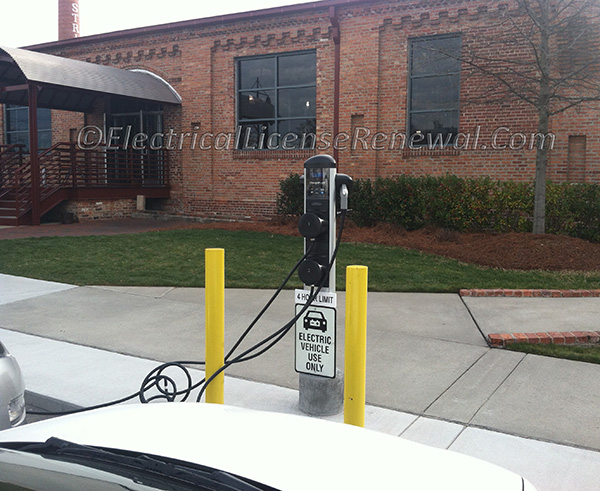625.44 Electric Vehicle Supply Equipment Connection.

Code Change Summary: A new code section replaces the previous requirements in Part III of Article 625 pertaining to cord and plug connection of an electric vehicle (EV) charger.
The previous code requirements in Part III of Article 625, pertaining to the construction of electric vehicle (EV) charging equipment, have been relocated to Part II of Article 625 and now, Part III only applies to the actual installation.
Located in the Part III revisions are several new code sections including 625.44 which is all about the EV supply equipment connection. Previous code language in Part III restricted the use of cord and plug connected EV charging equipment to only a few select installations.
Now, the revisions in Part III allow for a much broader application of cord and plug connected EV charging units.
In 625.44, the EV charging equipment can be cord and plug connected in accordance with 625.44(A) or 625.44(B). Both of those sections offer different installation methods based on equipment voltage but still have one thing in common: They both require any receptacle used for the cord and plug connection to be non-locking. Any other equipment configuration not covered in 625.44(A) or 625.44(B) must be permanently wired and fastened in place to the supporting surface, wall, pole, or other structure.
Below is a preview of the NEC®. See the actual NEC® text at NFPA.ORG for the complete code section. Once there, click on the “free access” tab and select the applicable year of NFPA 70 (National Electrical code).
2014 Code Language:
625.44 Electric Vehicle Supply Equipment Connection. Electric vehicle supply equipment shall be permitted to be cord- and plug-connected to the premises wiring system in accordance with one of the following:
(A) Connections to 125-Volt, Single-Phase, 15- and 20-Ampere Receptacle Outlets. Electric vehicle supply equipment intended for connection to nonlocking, 2-pole, 3-wire grounding-type receptacle outlets rated at 125 V, single phase, 15 and 20 amperes or from a supply of less than 50 volts dc.
(B) Connections to Other Receptacle Outlets. Electric vehicle supply equipment that is rated 250 V maximum and complying with all of the following:
(1) It is intended for connection to nonlocking, 2-pole, 3-wire and 3-pole, 4-wire, grounding-type receptacle outlets rated not more than 50 amperes.
(2) EVSE is fastened in place to facilitate any of the following:
- Ready removal for interchange
- Facilitation of maintenance and repair
- Repositioning of portable, movable, or EVSE fastened in place
(3) Power-supply cord length for electric vehicle supply equipment fastened in place is limited to 1.8 m (6 ft).
(4) Receptacles are located to avoid physical damage to the flexible cord.
All other electric vehicle supply equipment shall be permanently wired and fastened in place to the supporting surface, a wall, a pole, or other structure. The electric vehicle supply equipment shall have no exposed live parts.